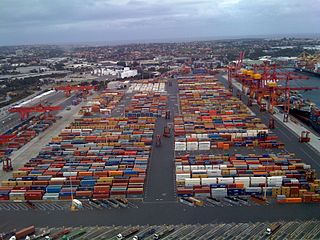 Reflecting stumbling growth in the world economy, world seaborne shipments grew less than 4% in 2013, while maritime freight rates crumbled, according to a new report from the United Nations Conference on Trade and Development (UNCTAD).
Reflecting stumbling growth in the world economy, world seaborne shipments grew less than 4% in 2013, while maritime freight rates crumbled, according to a new report from the United Nations Conference on Trade and Development (UNCTAD).
UNCTAD’s “Review of Maritime Transport 2014” reports that the volume of world merchandise trade expanded by 2.2% in 2013, down from 2.3% in 2012. “Constrained by a faltering growth in the world economy, this rate remains modest by historical standards in comparison to pre-2009 levels,” says the report.
Seaborne cargo expanded by an average of just 3.8% last year, taking total volumes to nearly 9.6 billion tons. Much of the expansion was driven by growth in dry cargo flows, in particular bulk commodities, which grew by 5.6%, the report says.
Portcalls reported on UNCTAD’s “Review of Maritime Transport 2013” in December last year, where the review said international maritime trade in 2012 rose in volume by 4.3 percent, reaching 9.2 billion tons. The improvement was driven by rising domestic demand in China and by increased intra-Asian and south-south trade.
Meanwhile, world container port throughput in 2013 increased by an estimated 5.6% to 651.1 million twenty-foot equivalent units (TEUs) in 2013.
The report says that 2013 was marked by another gloomy and volatile maritime freight rates market: all shipping segments suffered substantially, with freight rates in dry bulk and tanker markets reaching a 10-year low in 2013 and similarly low levels in the liner market.
“Low performance of freight rates was mainly attributable to the poor world economic development, weak or hesitant demand and persistent supply overcapacity in the global shipping market,” adds the report.
The size of the world fleet reached a total of 1.69 billion deadweight tonnage in January 2014, following 4.1% growth in 2013. Bulk carriers accounted for 42.9% of the total tonnage, followed by oil tankers (28.5%), and container ships (12.8).
This rate of growth was lower than that observed during any of the previous 10 years, and the trend in early 2014 suggests an even lower growth rate for the current year, the report says. The slowdown reflects the downturn of the largest historical shipbuilding cycle, which peaked in 2012.
As for future vessel deliveries, during 2013, for the first time since the economic and financial crisis in 2008, the order book increased slightly for most vessel types, the report says. After the previous significant decline, it will take time for those resuming vessel orders to prompt the start of a new shipbuilding cycle.
The report calculates that the largest national fleets by flag of registration in 2014 are those of Panama, followed by Liberia, the Marshall Islands, Hong Kong, and Singapore. Together, these top five registries account for 56.5% of world tonnage.
In 2013, private equity investments continued to play a key role in the shipping industry, as traditional bank financing remained very limited.
With world container port throughput increasing by an estimated 5.6% to 651.1 million TEUs in 2013, the share of port throughput for developing countries grew about 7.2%, higher than the 5.2% increase estimated for the previous year. Asian ports continue to dominate the league table for port throughput and terminal efficiency.
Despite this relatively weak growth compared with the trend before the economic crisis, the terminal operating sector is very active, the report says. Several global terminal operators have sold part of their stakes as they seek to streamline and focus their operations. Terminal operators closely linked to shipping lines have sold terminals, while traditional global terminal operators, such as DP World and Stevedoring Services of America, have attempted to strengthen their position by focusing on investment.
Photo: Aaron Jacobs




